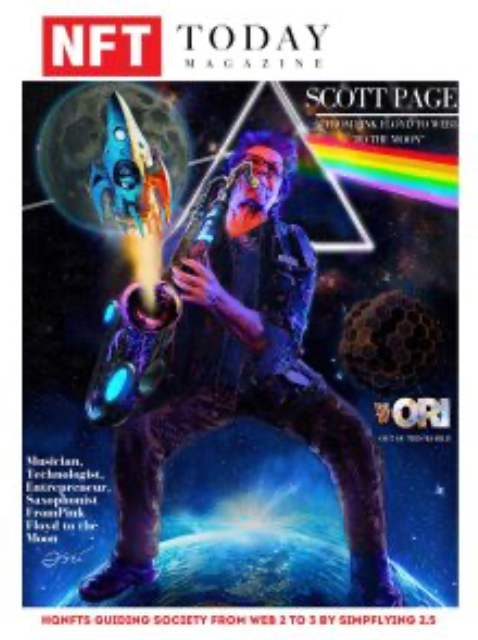KULR is sending batteries to space, stacking Bitcoin, and suiting up workers in robotic exoskeletons
Staff Writer • 2025-06-29
On the Stonks Go Moon Podcast, KULR CEO Michael Mo breaks down how the company went from powering NASA missions to holding 920 Bitcoin and launching a blockchain-secured supply chain. When it comes to futuristic companies, few tick as many boxes as KULR Technology. The California-based firm provides battery safety systems for NASA, holds hundreds of Bitcoin in its treasury, and is now rolling out robotic exoskeletons for factory workers. In a recent appearance on the Stonks Go Moon Podcast, CEO Michael Mo shared how the company’s three-decade journey in energy management has evolved into one that intersects with blockchain, AI, and robotics. “We believe we’re at the cross-section of some of the biggest digital transformations in human history,” Mo said. “The transformation of capital through Bitcoin, of intelligence through AI, and of energy through advanced battery systems.” From Mars to the Moon and beyond KULR’s legacy starts with space. Its battery technology has been used in missions like the Mars Perseverance Rover, the International Space Station, and NASA’s upcoming Artemis program, which plans to return humans to the Moon by 2028. “Battery safety in space is non-negotiable,” Mo said. “We’ve worked with NASA and the DoD for over 30 years, and we’re constantly innovating around thermal runaway prevention.” That credibility helped set the stage for KULR’s next act—transforming how companies store value and track inventory on Earth. 920 Bitcoin and counting In late 2024, KULR conducted a public poll on X (formerly Twitter) asking whether the company should adopt a Bitcoin-first treasury strategy. Over two-thirds of respondents voted yes. Just after Christmas, KULR announced its first purchase: $21 million worth of Bitcoin. Today, the company holds 920 BTC and has seen a 260 percent return year-to-date. “We started by asking our stakeholders. The feedback was overwhelming,” Mo said. “So we moved forward and bought our first tranche of Bitcoin at the end of December.” The strategy aligns closely with the approach pioneered by MicroStrategy’s Michael Saylor. In fact, Mo revealed that he had conversations with Saylor and has modeled much of KULR’s approach after MicroStrategy’s. “We’ve been stacking Bitcoin on a regular basis. We even set up a $300 million ATM facility to give us more flexibility to keep building our treasury.” Bringing blockchain to the factory floor Beyond treasury management, KULR is also using blockchain to enhance its operations. The company now mints NFTs containing metadata for each battery sold to high-stakes clients like NASA and the Department of Defense. These tokens offer full traceability, tracking, and proof of authenticity. “Inventory tracking on-chain creates a tamper-proof, timestamped record,” Mo explained. “It eliminates manipulation risk and ensures every stakeholder has access to a single source of truth.” This type of blockchain-secured supply chain could soon become the gold standard for aerospace and defense manufacturing, where even minor data discrepancies can have life-or-death consequences. Meet the robot suit lifting four elephants a week The most surprising revelation from the interview came when Mo introduced KULR’s new partnership with German Bionic, makers of industrial-grade exoskeleton suits that help workers lift heavy objects and prevent back injuries. “In a two-hour shift, one of our customers in California showed that the suit removed over 10,000 pounds of weight from a worker’s body,” Mo said. “That’s about four elephants a day. Twenty elephants a week.” Unlike sci-fi humanoid robots, these wearables are already in use and come equipped with sensors and software that provide real-time guidance to users. “Exoskeletons are the fastest way to bring robotics into the workplace,” Mo noted. “We see massive potential in construction, logistics, healthcare, and manufacturing.” Why it matters KULR Technology is redefining what a modern manufacturing and energy company can be. Its work spans space tech, blockchain infrastructure, crypto finance, and robotic augmentation. Most importantly, it’s not just theory—the company is already shipping batteries to space, storing value in Bitcoin, and helping workers on the ground do more with less strain. From NASA missions to Bitcoin mining strategy, the full conversation between Michael Mo and host Rocco Strydom offers a front-row look at how one company is navigating—and driving—some of the most powerful trends in tech. Listen to the full interview on the Stonks Go Moon Podcast: https://linktr.ee/sgmpodcast Learn more about KULR Technology: https://kulr.ai/ Disclosure: This article is based on an interview originally conducted by Rocco Strydom on the Stonks Go Moon Podcast.
See More Posts
A look at how NFTS, Web 3, Gaming, Cryptocurrencies and Blockchain are reshaping businesses across the globe.
@NFT Today Magazine


